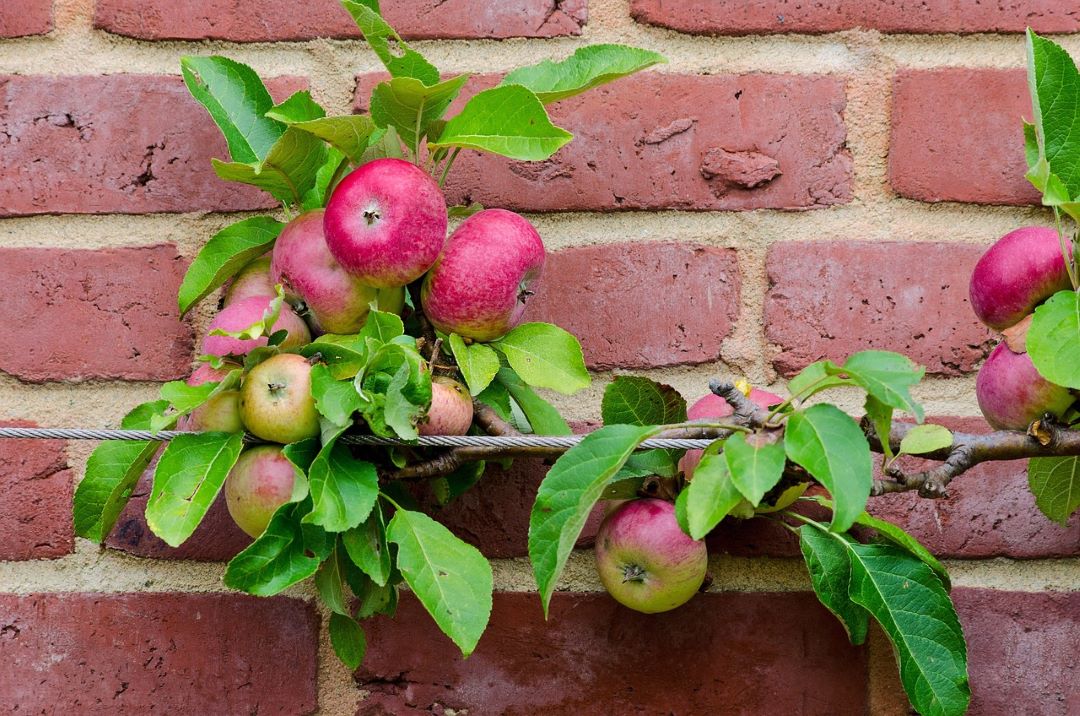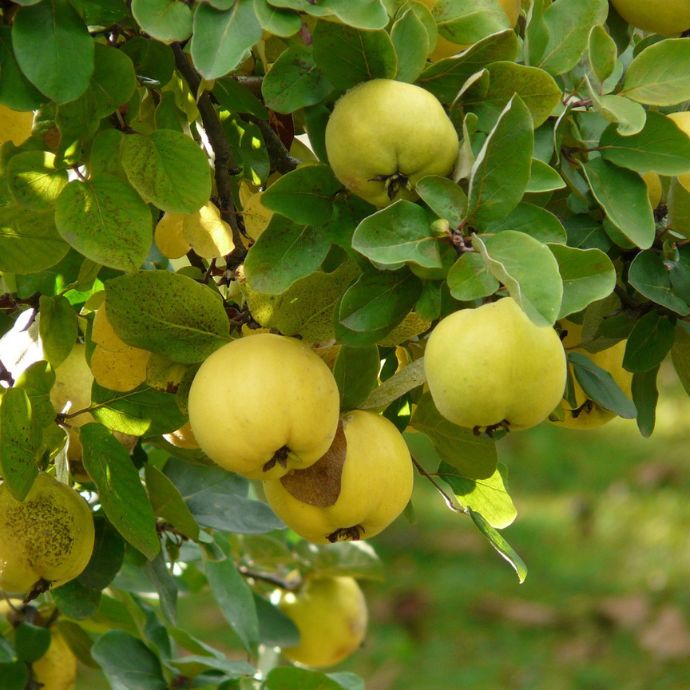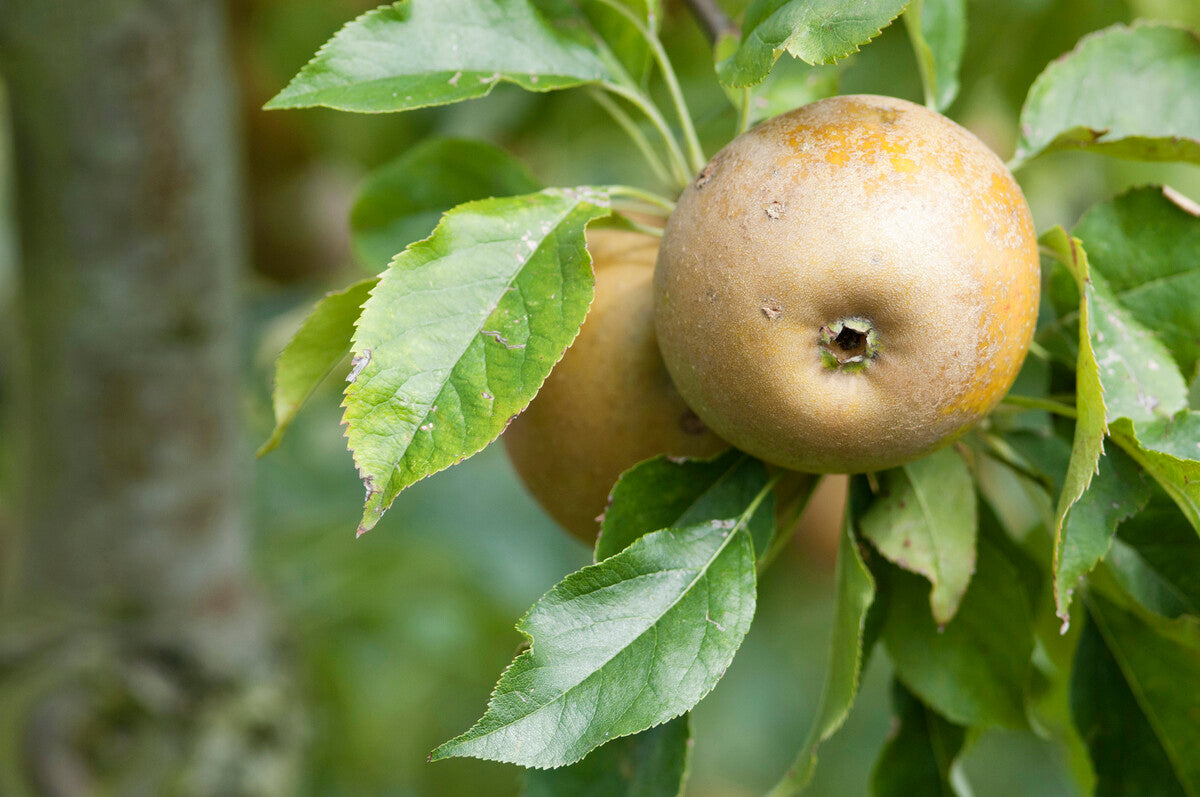Advice & Inspiration
Apple Trees in Pots: A Grower’s Guide
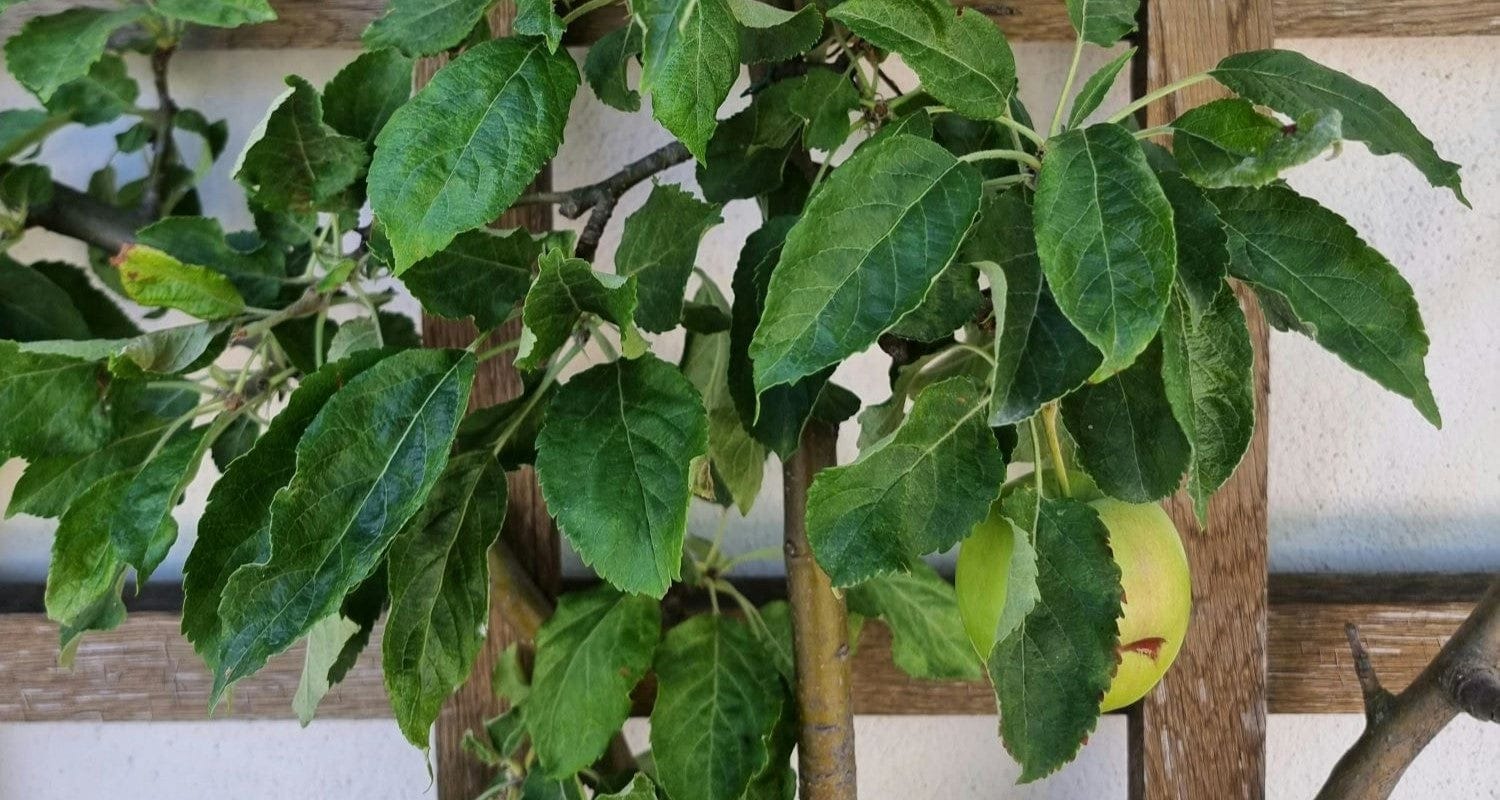
Every garden should have an apple tree. But what if your garden isn’t big enough, or you don’t have a garden at all? That’s where growing apple trees in pots comes in! With more and more varieties being specially bred for small spaces, patio pots and containers, there’s no reason for you to miss out. Just follow our growers’ guide and you’ll be picking your own crisp, juicy crop of apples before you know it.
Jump to:
- Why grow in pots?
- Best apple trees for pots
- Which type of pot?
- Positioning
- How to plant in pots
- Adding other plants
- Watering
- Feeding
- Winter care
- Pruning
Why choose a potted apple tree?
There are many advantages to growing apple trees in pots, especially if space is tight or you’re gardening on a balcony, a patio or in a yard.
- Fewer pests and diseases. Growing in pots makes pest control simpler - you don’t have to worry about soil-borne diseases or fungal spores from overcrowded beds. Keep a close eye out for apple tree diseases - it’s much easier to control them when they’re spotted early. It’s also easy to spot pests like aphids before they become a problem, and to keep the weeds down around the base of the tree.
- They’re portable. If your tree is in a pot, you can move it around according to where the sun is brightest (especially if you put the pot on a wheeled stand) or bring it indoors if there’s a storm threatening. Even better, you can take it with you when you move house, so it’s perfect if you’re renting or just starting out.
- They look adorable. Everything’s better in miniature, right? There’s also an evocative Mediterranean vibe that comes with fruit trees in pots, transporting you to more temperate zones if you half close one eye. Arrange your potted tree on a sunny patio or balcony (next to your seating is ideal) with fragrant lavender, jasmine and citrus trees to complete the effect. Alternatively you can start a patio fruit farm with pears, cherries and plums suitable for growing in pots too.

The best apple trees for pots
The most important factor in successful apple growing is choosing the right tree. Not all of them do well in pots, but there are lots of varieties to choose from that will thrive. It’s all dependent on the rootstock you choose, as it’s this that determines the size your tree will eventually reach. For growing in a pot, you’ll need to choose a dwarfing or semi dwarfing rootstock.
You can get a full explanation in our guide to rootstocks, but for the purposes of apple trees, these are the available sizes.
- M27: grows to 1.2m
- M26: grows to 2.4-3m
- M9: grows to 2.5m
- M6: grows to 3m
- MM106: grows to 3.4m
For a pot, you’re best off choosing an M27, M26 or M9 rootstock, sometimes referred to as patio sized. You can also buy a ready trained cordon apple tree, which is grown on a single stem and is a great solution for narrow spaces. You’ll find all the size options on our apple tree pages - just select the best one for you.
Now you’ve chosen the size, which variety should you go for? It all depends on which apples you like to eat, and there’s plenty of choice.
Cooking apples
Both of the top cooking apples Bramley’s Seedling and Grenadier are available on M26 rootstock and Bramley can also be bought as a cordon tree. Which one you choose might depend on when you’d prefer to harvest - early cropping Grenadier apples are ready from July to August and Bramleys from September to October.
Dessert and dual purpose apples
For rosy red apples that are easy to grow in pots, there are plenty of great varieties on M26 (dwarf) rootstock, including Braeburn, Gala, Rubinette, Ashmead’s Kernel and Laxton’s Superb in addition to James Grieve and Purple Haze in cordon form. If you prefer a green apple, go for a Granny Smith, or for a traditional British cox style apple, try a Kidd’s Orange Red, Queen Cox or the original Cox’s Orange Pippin. Too much choice? Ask an expert. Our apple grower, John, recommends Discovery, Sunset and Pixie apples for growing in pots.
Heritage apples
For something a bit different that you wouldn’t see in the shops, you can also grow a good old fashioned Herefordshire or Egremont russet apple or a hard to find heirloom like Worcester Pearmain or Blenheim Orange.
Find our growers’ full range of dwarf apple trees.
Do you need a self fertile apple tree?
If you only have space for one apple tree, you may be worried that it won’t crop due to a lack of pollination, as many trees need a partner tree to do the job. In practice though, there are so many apple and crabapple trees in the UK that there’s a 90% chance of another tree within a mile, so you’ll be fine. However, if you live in a remote area where this may not be the case (or if you just don’t like those odds) you can opt for a self fertile variety such as Braeburn, Sunset, Falstaff, Queen Cox, Red Devil or Scrumptious. If you want to know more about apple pollination and how it can boost your crop, I went down that wormhole for you.
Can you grow any old apple tree in a pot?
You can, but the results will be varied. The best way to grow a potted apple tree is to choose a dwarfing rootstock as above, but another method is to use the pot itself to restrict growth. As you can imagine, this isn’t great for the health of the tree and you’ll have to do a lot of pruning, but it can work if the container you choose is large enough. If not, you’ll have to repot it every year or two. More vigorous varieties of apple can also be suitable for training as cordons, which restricts their growth but produces very respectable crops on a single stem. If you fancy giving this method a go, make sure you choose a spur bearing apple variety - find out more by reading our guide to apple tree training.
Choosing the right pot for your apple tree
Which pot is best for your apple tree? It doesn’t matter what material it’s made of - treated wood, metal, plastic, terracotta - they’re all good as long as they’re stable*, but choose the biggest one you can find (at least 45-60cm wide and deep or 40-60L) and repot the tree every two to three years if needed, increasing the pot size by 10-20L each time. If you’re unsure, err on the side of caution and choose the larger size, always allowing plenty of space for the tree’s roots to spread out.
*You’ll also need to make sure the pot won’t topple over in the wind, as the tree stem could break if this happens. Avoid anything too low or narrow, and use a wood or bamboo stake for extra stability.
The best position for potted apple trees
Apple trees prefer to be planted in a sunny, sheltered area where they’ll get a full six to eight hours of sunlight every day in spring and summer, so for potted trees a patio or a sheltered balcony position is ideal. Having said that, they can deal with a bit of shade, so don’t worry if, for example, you have a walled yard that gets a bit cooler in the afternoon. The payoff in terms of shelter from the wind will more than make up for it!
How to plant a potted apple tree
- First of all, put some broken crockery or stones in the bottom of your pot, to help it drain well. If you know you’re going to want to move your pot around, now is a good time to place it on top of a wheeled pot stand before it gets too heavy.
- Use either compost or normal garden topsoil to fill your pot - there are advantages to each. Using compost means that the risk of soil-borne diseases is minimal and the tree will get a nice boost of nutrients when you plant it. With topsoil, you won’t have to water quite so often, as it dries out more slowly, but you may want to add a sprinkle of all purpose fertiliser to the pot when planting, to give the tree a good starter feed. A mixture of both media is good, too!
- Half fill the pot with your soil and/or compost, then place the tree squarely in the centre and fill in the rest of the pot up to the level of the nursery pot, firming the soil down around the roots as you go.
- Add a layer of mulch to the top of the pot - this can be bark chips, manure, gravel or pebbles. This will help to keep weeds away and keep moisture in the soil for longer.
- Give your tree a good watering to settle the roots - rainwater is best if you have it.
Check your tree every two to three years and repot it if necessary. You’ll know it’s time for a bigger pot if the tree’s growth slows down, the soil dries out more quickly than usual, you can see roots coming through the bottom of the pot or it looks generally unhappy.
Find more information in our apple tree planting guide.
Can you add more plants to the pot?
Growing more plants in the pot along with your apple tree is an option which can look attractive and even do the tree good.
Garlic, chives or other strong smelling herbs planted alongside it will keep pests such as aphids away from your tree, and similarly, nectar-rich flowers like foxgloves, achillea and campanula will attract bees and other pollinators, helping to increase your apple crop.
Having said that, I’d only do this if the pot was very large and there was plenty of room, as otherwise you run the risk of the other plants competing with your tree for nutrients. If your pot is only really big enough for the tree, you could plant your herbs and bee friendly flowers in smaller pots next to it instead, and plant small bulbs such as muscari or snowdrops under your tree, or low growing perennials with shallower roots, such as primroses.
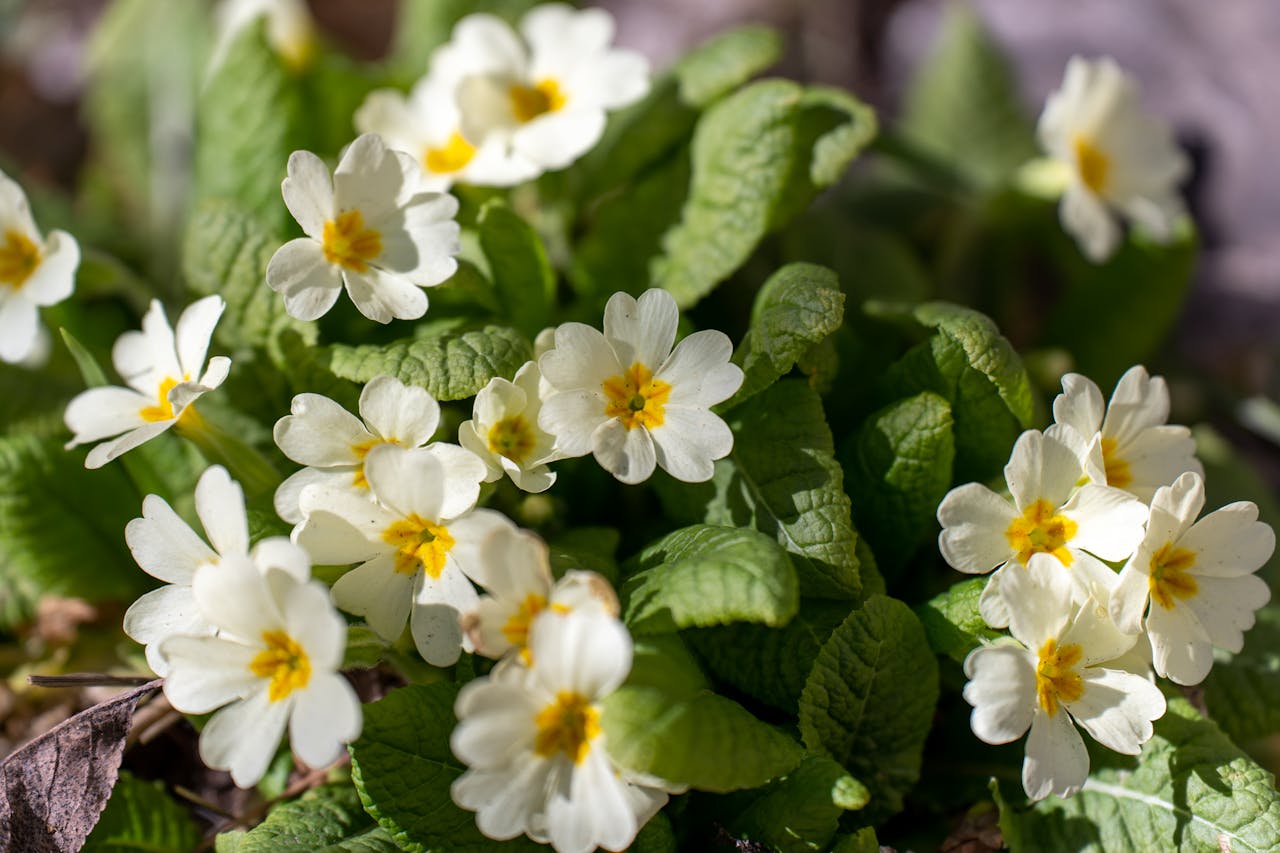
Watering apple trees in pots
The one thing you really need to keep on top of when growing potted apple trees is watering, as the rain can’t reach potted trees in the same way it does those in the ground. In summer you’ll probably have to water them every day, but be careful they don’t get waterlogged. The soil shouldn’t be allowed to dry out completely, but the first 1cm of the surface should feel dry before you water again. Try to water at the base of the plant rather than from above and water in the morning, to avoid the risk of water borne moulds and mildews affecting the leaves.
You shouldn’t have to water at all throughout late autumn and winter, when the tree will be dormant, but it’s always best to check.
Feeding apple trees in pots
Feeding is also something you’ll have to do more of if your tree is in a pot, as there’s a smaller area of soil for it to draw nutrients from. Give it a good sprinkle of general purpose feed when you plant your tree - you can also help it get established with a hormone treatment like Rootgrow. After this, feed your tree every spring when the blossom starts to develop. Adding a mulch of compost, bark chips or similar every autumn will help the tree to retain nutrients and water in the soil, as well as suppressing weeds.
Winter care for potted apple trees
Apple trees are hardy plants, well equipped to deal with all that the UK weather can throw at them, but if there’s a particularly vicious frost or strong winds forecast at blossoming time, it’s nice to know you’ve got the option of moving your tree to a more sheltered spot. If you do move your tree indoors, choose an unheated shed, garage or greenhouse and make sure the tree has enough light and water at all times. If your pot is too large to move, you can also leave your tree where it is and wrap it in horticultural fleece or bubble wrap until the weather improves.

How to prune your potted apple tree
You don’t have to prune - especially not in the first couple of years - but it can help to keep your apple tree healthy, productive and well shaped to fit the space it’s growing in. The best time to prune, if you choose to, is in late autumn to early spring when the tree is dormant (not in active growth).
- Firstly, remove any branches that are dead, damaged or diseased. Then cut away any that are crossing over or growing inwards towards the trunk.
- Look at the centre of your apple tree and prune away any branches that look crowded. What you want here is a nice airy and open centre which will allow air and sunlight to reach every part of the tree.
- After the second year, you can reduce the size of your tree or keep it the size it is by cutting back the main branches by about a third and the thinner branches to six buds on the branch.
You can find out more in our complete apple pruning guide.

More space saving apple trees to grow
If you like the idea of growing apple trees in small spaces, why not try creating your own cordons or training them into fans, espaliers and even low growing stepovers? Here’s how.
